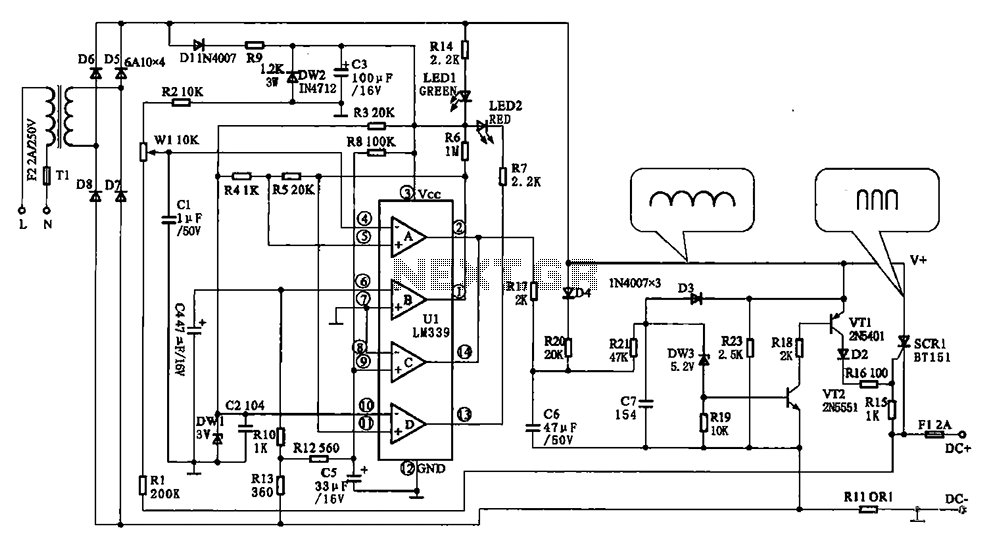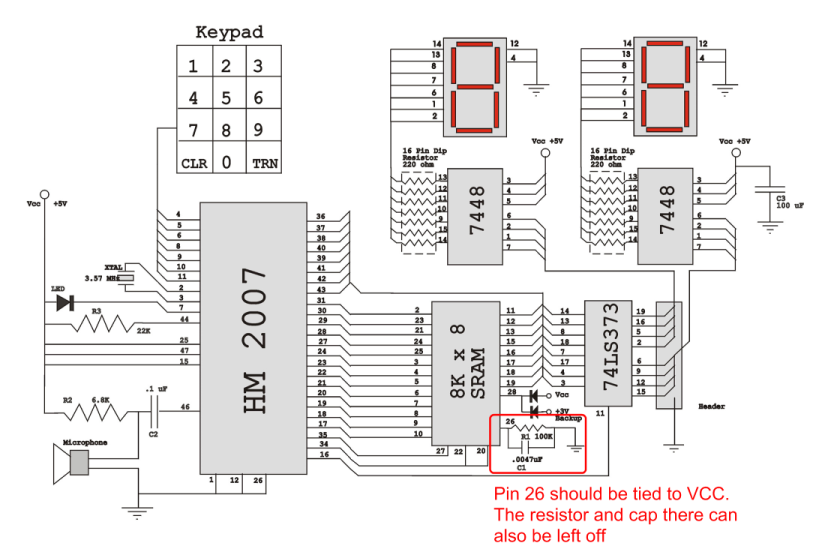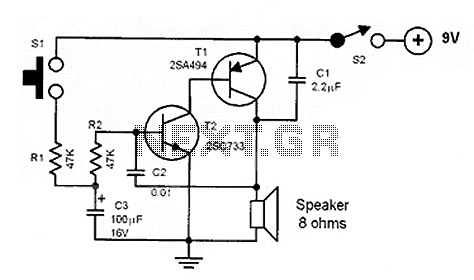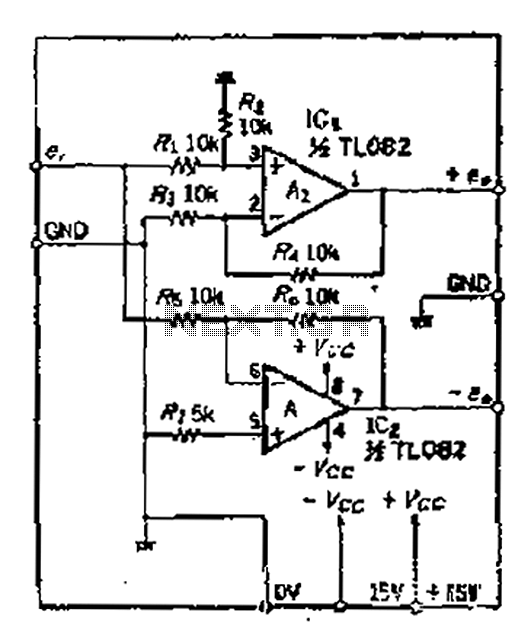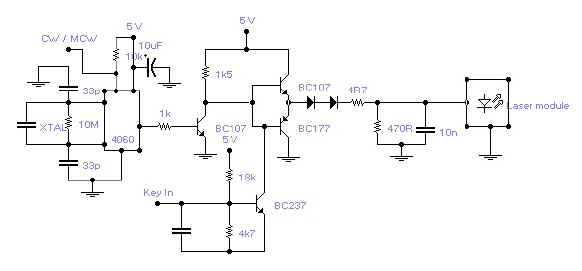
Audio Compressor Circuit
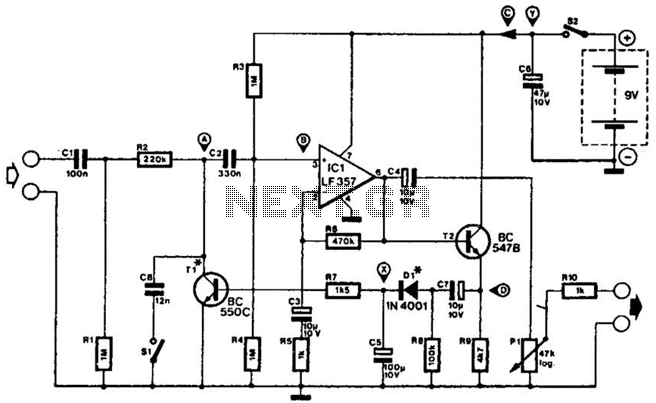
This compressor will compress a 25-mV peak-to-peak (p-p) audio signal to a 20-V p-p output, maintaining input levels between 1.5 V p-p and 3.5 V p-p, with a frequency response ranging from 7 Hz to 67 kHz. It is suitable for audio and communications applications.
The described compressor circuit is designed to handle audio signals effectively by compressing low-level signals (25 mV p-p) to a much higher output level (20 V p-p). This capability is particularly useful in various audio processing applications, where maintaining signal integrity while adjusting levels is crucial. The input range of 1.5 V p-p to 3.5 V p-p allows for a wide variety of signal sources, ensuring compatibility with different audio equipment.
The frequency response of the compressor spans from 7 Hz to 67 kHz, indicating its ability to handle both low-frequency sounds, such as bass, and high-frequency sounds, including treble. This broad frequency range makes it suitable for high-fidelity audio applications, ensuring that the compressor does not introduce significant distortion or loss of quality to the audio signal.
In practical applications, this compressor can be integrated into audio mixing consoles, broadcasting equipment, or communication devices where dynamic range control is necessary. The design may include operational amplifiers configured in a feedback loop to achieve the desired compression characteristics, along with components such as resistors, capacitors, and diodes to shape the frequency response and ensure stability.
The implementation of this compressor circuit can enhance audio clarity, prevent clipping during loud passages, and improve overall sound quality in both live and recorded environments. The versatility of this device makes it an essential component in modern audio processing systems. This compressor will compress a 25-mV p-p to 20-V p-p audio output to input levels remaining between 1.5 V p-p to 3.5 V p-p, and has a frequency response of 7 Hz to 67 kHz. It is suitable for audio and communications applications. 🔗 External reference
The described compressor circuit is designed to handle audio signals effectively by compressing low-level signals (25 mV p-p) to a much higher output level (20 V p-p). This capability is particularly useful in various audio processing applications, where maintaining signal integrity while adjusting levels is crucial. The input range of 1.5 V p-p to 3.5 V p-p allows for a wide variety of signal sources, ensuring compatibility with different audio equipment.
The frequency response of the compressor spans from 7 Hz to 67 kHz, indicating its ability to handle both low-frequency sounds, such as bass, and high-frequency sounds, including treble. This broad frequency range makes it suitable for high-fidelity audio applications, ensuring that the compressor does not introduce significant distortion or loss of quality to the audio signal.
In practical applications, this compressor can be integrated into audio mixing consoles, broadcasting equipment, or communication devices where dynamic range control is necessary. The design may include operational amplifiers configured in a feedback loop to achieve the desired compression characteristics, along with components such as resistors, capacitors, and diodes to shape the frequency response and ensure stability.
The implementation of this compressor circuit can enhance audio clarity, prevent clipping during loud passages, and improve overall sound quality in both live and recorded environments. The versatility of this device makes it an essential component in modern audio processing systems. This compressor will compress a 25-mV p-p to 20-V p-p audio output to input levels remaining between 1.5 V p-p to 3.5 V p-p, and has a frequency response of 7 Hz to 67 kHz. It is suitable for audio and communications applications. 🔗 External reference
Warning: include(partials/cookie-banner.php): Failed to open stream: Permission denied in /var/www/html/nextgr/view-circuit.php on line 713
Warning: include(): Failed opening 'partials/cookie-banner.php' for inclusion (include_path='.:/usr/share/php') in /var/www/html/nextgr/view-circuit.php on line 713
